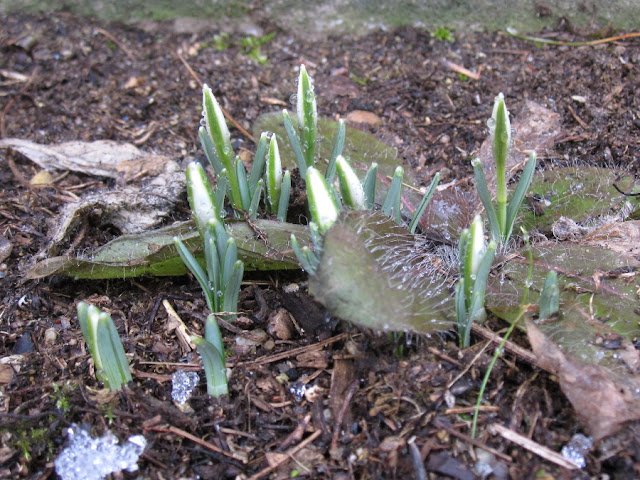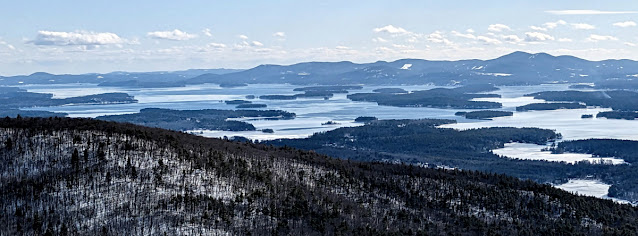On a recent trek through through the wilds west of Wicwas I had the incredible fortune to catch a glimpse of the ethereal and much sought-after Sasquatch!
 |
| Bigfoot stalks the forests west of Lake Wicwas. |
Careful examination of the area however, turned up no evident prints so I was unable to track it or even measure the size of its feet. How it got there and where it came from will remain a mystery, adding to the perplexing history of this mythical creature.
 |
| Now we know Bigfoot has red eyes. |
This week was another roller-coaster week in New Hampshire. It started warm, got snowy, then turned frigid. On Monday the lake was still good for skating, and I saw a few of these ice volcanoes on the lake.
 |
| Ice volcanoes |
 |
| Bumpy but smooth, if that makes any sense. |
And it had been so warm in recent weeks that the snowdrops have emerged already, the earliest I've ever seen them.
 |
| Snowdrops were up by February 12th. |
My prior earliest observation of snowdrops was on February 17th, just last year. Fortunately they haven't yet bloomed, because snow and cold arrived and plunged us back into winter.
This recent cold spell reminded me again of seeing self-heal plants poking up through the snow earlier this winter, which made me think about how plants - perennials in particular - can survive through frigid New England winters.
 |
| Self heal after a January snowfall. |
Warm blooded animals create their own heat, and cold blooded animals either seek a space that stays above freezing, or incredibly, as in the case of the wood frog, create chemicals that let their body freeze nearly solid without damage. But how do evergreen trees and perennials with roots within the frost line survive sub-zero temperatures? Plant cells, like all living materials, contain water which expands when it freezes, which would normally burst the cells open. To understand how plants avoid having their cells burst when temperatures drop below freezing, I went to the UNH Extension Service data base and found a nice summary of their methods written by Sharon Walker titled "Dormancy - A Key to Winter Survival". Walker explains that during the summer plants create materials, especially sugars and salts, which they store in their cells. This lowers the freezing point of the water in their cells, the same way salt in the ocean lowers the ocean freezing point to 28 degrees versus fresh water at 32 degrees. Furthermore, as the weather cools their cells wall become more permeable to water which allows water to leave their cells, increasing the concentration of sugars and salts, and allowing more room for expansion without bursting.
I've seen how the leaves of rhododendron and related plants curl up in very cold weather - I wonder if the curling is the result of contraction of cells in their leaves.
So far this winter our cold snaps have been short, and this one is again only a couple of days and barely below zero so it will be just a short test for the flora and fauna of the Lakes Region. But it's cold and snowy this morning, and nice to have winter back - it is February after all.
 |
| A snowy morning from the top of Ragged Mountain. Photo by Linda Hammill (thanks!) |









































